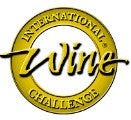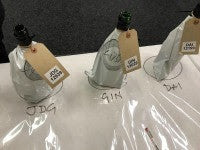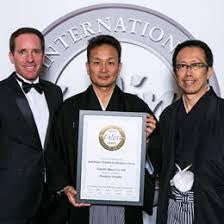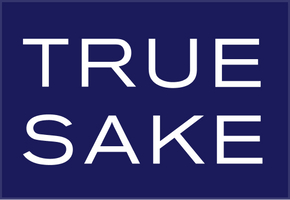Sake Moments – International Wine Challenge 2017 (IWC)

So do you want the results of this year’s winners? Ha! You won’t find them here. My lips are sealed. But truthfully, I only know the Trophy winners for each category, and I am sworn to absolute secrecy! But let me say this, Wow! What a tasting! What an event! What a super success IWC’17 was in London this April. I’m still a little blown away by who won the Champion’s Trophy, but let’s go back to the beginning to set the stage a little better.
Firstly, let me define what the International Wine Challenge Sake judging is all about, because I am really proud of the methodology for this event. Basically, the IWC is the judging for the consumers of sake. That’s it! Breweries only submit sakes that are available on the sake market to average sake drinkers such as you. These are not specially made sakes for a competition that is closed to consumers using sakes that will never see the open market. These are not tricked out sakes using a brewery’s best rice, yeast, water, and techniques etc. These are a brewery’s regular efforts. Does that sound bad? It shouldn’t, because we taste what each brewery that submits is capable of making year in a year out for their customers. This is sake for the people!

Last year was the 10th anniversary of the sake-side of the IWC, so we held the event in Hyogo Prefecture to celebrate sake in the birthplace of sake. So we set many records last year for submissions and medals etc. It was off the charts. So we were a little apprehensive to see what would happen in London (the home of the IWC) after such an amazing success in Hyogo. Let me be the first to say we set new records this year. Woot! The previous record for submissions to a London IWC was about 900 sakes, and this year we had 1,245 submissions. That’s awesome! It represented 390 breweries predominately from Japan with a few other countries kicking in. That’s a ton of sakes to judge and guess what? We set a record too for the amount of judges who worked the IWC this year.
What’s it take to be a judge for the IWC? Well, in a word, you gotta have the chops! You have to have a really good understanding of sake, and this can come from many different channels. Lots of our judges have come from the wine world, lots come from the beverage world, but most come from the sake world. Most judges have some form of dedicated sake education from Sommelier programs to deeper and more focused sake training. There is a concerted effort to have an even mix of Japanese and Non-Japanese or “Western Palates.” And this year we had 60 judges from 14 different countries.
The IWC sake judging is broken into two rounds. Round 1 consists of tasting category flights to determine if a sake is: Out (flawed), Commended (good, but not medal worthy), and Medal (good enough to be further judged for a specific medal). It’s a fun round and the sakes really speak for themselves. Oddly, we had a lot of Outs this year, and as a Co-Chair we had to taste and retaste all Outed medals. In most cases the sakes were okay, but just tasted differently than others in a flight. But there were a few sakes that were damaged and needed to be removed. What does a damaged sake taste like? You know it! Some are over-oxidized, some are old, some have a classic damaged nose called Hine, and some have a really off taste.

The second round is where the action lives! In Round 2, the judges taste to determine if a sake is Gold, Silver, Bronze, Commended, or Out. And yes! We mix in some previously Commended and Outed sakes back into the second day to see if the judging is consistent. This year we had a record number of panels. And each panel or table had a Panel Chair, Senior Judge, Judges, and Associates. And yes, we grade the graders! Each year we look at how certain judges and Panel Chairs perform. And in true IWC form, you must move your way up the ranks. To me it’s sort of funny when I see some of the best judges from Japan as simply judges at the IWC. It makes sense though. You must do your time, and learn the methodology. I think the judges did an amazing job this year, and being in a position that I am affords me the optics to really see how well each Panel Chair did or did not do! (sometimes a Panel Chair can bully their panel and make each judge fall in line with their thinking, but we are always on the look out for this and act accordingly.)
Now take these numbers for what they are, because I was trying to calculate real time on the third day of judging and it was a bit hectic. But I think the Gold medals went as follows. There were 5 Golds in the Futsushu category. (I was actually really really pleased with this “low-end” category, because the sakes were on the whole very tasty and balanced so well for lower price point sake.) The Honjozo category had only 3 Gold medals, and to be honest I was a little unimpressed with this usually very strong category. The very interesting Junmai category had 6 Gold medals, and that was about on average for year’s past.
The Junmai Ginjo category had 10 Gold medals and I really liked their showing this year. Likewise, we had 14 Gold medals for the Junmai Daiginjo category and for good reason. This category rocked it and had the most Golds for any category at IWC’17. The Ginjo category fell off the shelf with only 2 Gold medals. This was the most surprising let-down for me during the whole tasting . I still cannot believe that more Golds didn’t speak to us, but I think that there were a lot of silvers so it works out I guess. I can’t tell you now, but I have a great Ginjo story to tell you when the IWC reveals all medals and trophies! The Sparkling sake category got beat up again with only two Gold medals (last year there was only one). We tried a new technique of tasting the Sparkling sakes after lunch this year as opposed to the end of the flights and before Koshu. The theory was similar to what they do in wine, to taste sparkling after lunch to wake the palate. I dunno! Lastly, and wow, the Koshu category produced 4 Gold medals and one of those was amazing!

On the Third Day the Panel Chairs taste all of the Gold Medal sakes to determine the Trophy winner for each category. Then the Co-Chairs tasted all of the Gold Medals knowing what the Panel Chairs selected and determined as Trophy Winners. Then the Co-Chairs tasted each Trophy Winner to determine which sake was the Grand Champion of IWC 2017. We were split 3-2, and the majority won! (I was one of the 2 – just saying!)
I walked away from IWC 2017 filled with pride. The sakes did their job. The judges did their job. The incredible team of IWC workers did their job. And all was good in the kingdom. I think that the IWC website will announce the winners in July. But I must tell you, that I felt like a winner just being a part of this great judging program that is so smart and accountable. There is no fabrication or trickeration in this judging. It is 100% accountable and honest. And that is the way it should be, right?
There are a few rumors swirling around for IWC’18 not being in London. I am not at liberty to say, but I’ll let you all know as soon as I can. And I won’t even begin to tell you what I heard about for IWC 2020! Ha!
